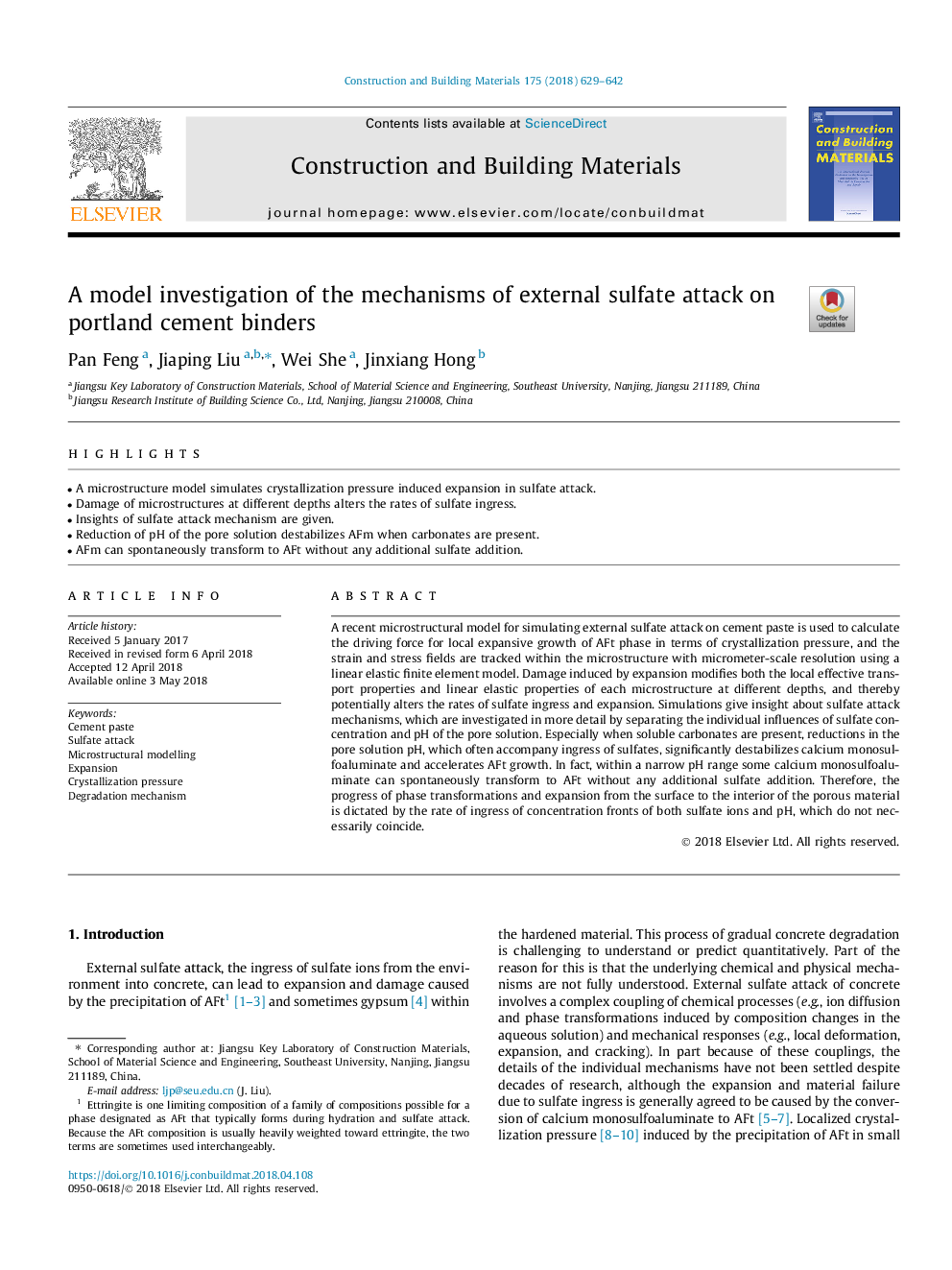| Article ID | Journal | Published Year | Pages | File Type |
|---|---|---|---|---|
| 6713638 | Construction and Building Materials | 2018 | 14 Pages |
Abstract
A recent microstructural model for simulating external sulfate attack on cement paste is used to calculate the driving force for local expansive growth of AFt phase in terms of crystallization pressure, and the strain and stress fields are tracked within the microstructure with micrometer-scale resolution using a linear elastic finite element model. Damage induced by expansion modifies both the local effective transport properties and linear elastic properties of each microstructure at different depths, and thereby potentially alters the rates of sulfate ingress and expansion. Simulations give insight about sulfate attack mechanisms, which are investigated in more detail by separating the individual influences of sulfate concentration and pH of the pore solution. Especially when soluble carbonates are present, reductions in the pore solution pH, which often accompany ingress of sulfates, significantly destabilizes calcium monosulfoaluminate and accelerates AFt growth. In fact, within a narrow pH range some calcium monosulfoaluminate can spontaneously transform to AFt without any additional sulfate addition. Therefore, the progress of phase transformations and expansion from the surface to the interior of the porous material is dictated by the rate of ingress of concentration fronts of both sulfate ions and pH, which do not necessarily coincide.
Keywords
Related Topics
Physical Sciences and Engineering
Engineering
Civil and Structural Engineering
Authors
Pan Feng, Jiaping Liu, Wei She, Jinxiang Hong,
